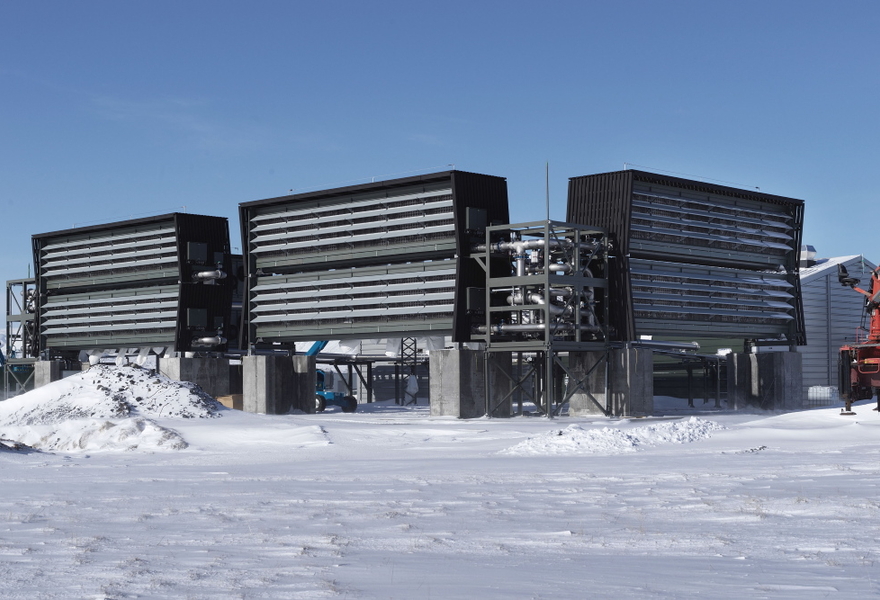Policymakers must now address the issue of carbon removals
An new study highlights the innovation gap, and the need for regulation. It was commissioned by the German government's Science Platform Climate Protection.

Air filter plant "Orca" in Iceland: in the largest direct air capture project to date, started in September 2021, the company Climeworks is removing 4,000 tonnes of CO2 anually. | Photo: Climeworks
Germany is expected to still be emitting 5 to 10 percent of current greenhouse gas emissions in 2045, i.e. the year in which greenhouse gas neutrality is stipulated in the Federal Climate Change Act. The country will therefore have to be cleaning up the equivalent climate gas emissions from the atmosphere to compensate. Policymakers must act now to close the considerable innovation gap in this regard and design appropriate framework conditions for implementation. This is the message conveyed in a study commissioned by the Science Platform Climate Protection, which advises the German government on its climate strategy. The study was led by the Berlin-based climate research institute MCC (Mercator Research Institute on Global Commons and Climate Change).
According to the authors, the crucial period for the introduction of large-scale extraction is between 2030 and 2050, i.e. beginning in eight years. "Atmospheric carbon removals cannot be a substitute for CO2 emissions reductions – they primarily serve to compensate for emissions that cannot be avoided," emphasises Sabine Fuss, head of the MCC working group Sustainable Resource Management and Global Change and lead author of the study. “But they may also reduce the costs and social impacts of climate protection that would result from extremely expensive emission avoidance options".
The 60-page paper provides information on potential technologies and obstacles to large-scale deployment, as well as options for regulation and funding. The research team cites tentative scenarios showing that a climate-neutral Germany would have to compensate for residual emissions of 37 to 73 million tonnes of CO2 equivalents annually through carbon removal. The focus on forests, agricultural and peatlands set out in the Federal Climate Change Act is viewed critically: to achieve such quantities cost-effectively and safely, a broad technology mix is needed. Under discussion are, for example, large air filter systems (“Direct Air Capture”) and the combination of climate plantations and biomass power plants with capture and underground storage of CO2. A funding perspective can be based on carbon pricing: those who extract climate gas from the atmosphere would receive compensation at the same rate as the price of remaining emissions. This would require a comprehensive monitoring system, however.
"It is crucial that the German government now develops a strategy for the long-term development and use of negative emissions," says Ottmar Edenhofer, MCC Director and one of the two chairs of the Science Platform’s steering committee. "The strategy should examine the possible applications and potentials of various options in more detail, develop the necessary legal and regulatory frameworks and funding measures and, last but not least, initiate a broader societal discourse on this issue."
Further information:
- Fuss, S., Gruner, F., Hilaire, J., Kalkuhl, M., Knapp, J., Lamb, W., Merfort, A., Meyer, H., Minx, J., Strefler, J., 2021, CO2-Entnahmen: Notwendigkeit und Regulierungsoptionen. Study commissioned by the Science Platform Climate Protection (Wissenschaftsplattform Klimaschutz), Berlin (in German)
https://www.wissenschaftsplattform-klimaschutz.de/files/WPKS_Gutachten_MCC_PIK.pdf - Press release of the Science Platform Climate Protection, here (in German).
- MCC Policy Brief „Cleaning up emissions from our atmosphere“, here.





